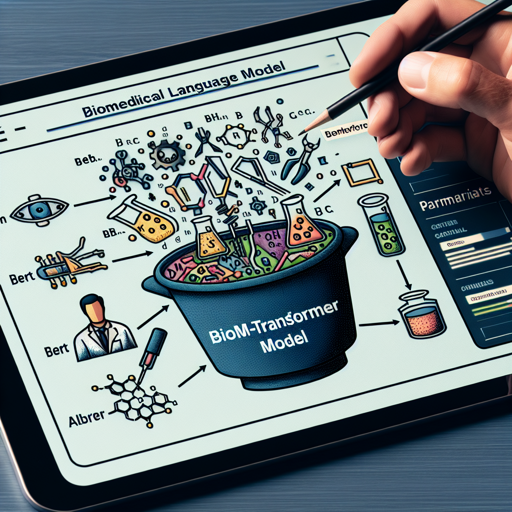Biomedical language models are becoming essential tools for researchers and healthcare professionals. With the advent of models like BioM-Transformers, leveraging the power of BERT, ALBERT, and ELECTRA has never been more accessible. In this guide, we’ll explore how to build and fine-tune large biomedical language models and dive into troubleshooting tips to help you on your journey.
Understanding BioM-Transformers
BioM-Transformers are designed to boost performance in biomedical tasks through careful design choices. Think of it as crafting a custom recipe in a kitchen. Just like choosing the right ingredients and preparation method can enhance the outcome of a dish, selecting the optimal parameters for a language model can significantly influence its effectiveness in processing and understanding biomedical texts.
Model Description
This model was pre-trained on the full article database from PMC (PubMed Central) for an extended run of 64K steps using a large batch size of 8192. Starting with weights from the BioM-ALBERT-xxlarge, the total training comes to 328K steps. Its architecture boasts a substantial hidden layer size of 4096, contributing to its robust performance.
Setting Up the Environment
- To run BioM-Transformers efficiently, you’ll utilize PyTorch XLA. This library allows PyTorch to access TPU units, offering a powerful platform for training large models. This is especially beneficial for researchers with limited resources.
- Google Colab and Kaggle provide free access to these TPU units, making high-performance computing more accessible than ever.
Fine-Tuning the Model
Follow these simple steps to fine-tune biomedical models using available resources:
1. Import necessary libraries including HuggingFace Transformers and PyTorch XLA.
2. Load the BioM-ALBERT-xxlarge model.
3. Utilize datasets like ChemProt for training.
4. Execute the fine-tuning process on the TPU.
5. Evaluate the model’s performance based on the micro F1 score.In a notable example, fine-tuning resulted in an impressive 80.74 micro F1 score on the ChemProt task in just 43 minutes across 5 epochs.
Accessing Colab Notebooks
Explore the following Colab notebooks to see BioM-Transformers in action:
- BioM-ELECTRA-LARGE on NER and ChemProt Task
- BioM-ELECTRA-Large on SQuAD2.0 and BioASQ7B Factoid tasks
- BioM-ALBERT-xxlarge on SQuAD2.0 and BioASQ7B Factoid tasks
- Text Classification Task With HuggingFace Transformers and PyTorchXLA on Free TPU
- Reproducing our BLURB results with JAX
- Finetuning BioM-Transformers with JaxFlax on TPUv3-8 with free Kaggle resource
Troubleshooting Tips
If you encounter issues during your project, consider the following troubleshooting ideas:
- Ensure that your environment is properly set up with the necessary libraries and TPU access, as failures often stem from missing dependencies.
- Review the model architecture for accuracy; a simple misconfiguration can lead to runtime errors.
- Monitor the training logs for warning messages that may indicate where things might be going wrong.
- Consult the GitHub repository for updates or existing issues similar to yours.
- For specific errors not covered, check the documentation provided for PyTorch XLA or HuggingFace libraries for additional troubleshooting tips.
For more insights, updates, or to collaborate on AI development projects, stay connected with fxis.ai.
Conclusion
At fxis.ai, we believe that such advancements are crucial for the future of AI, as they enable more comprehensive and effective solutions. Our team is continually exploring new methodologies to push the envelope in artificial intelligence, ensuring that our clients benefit from the latest technological innovations.

